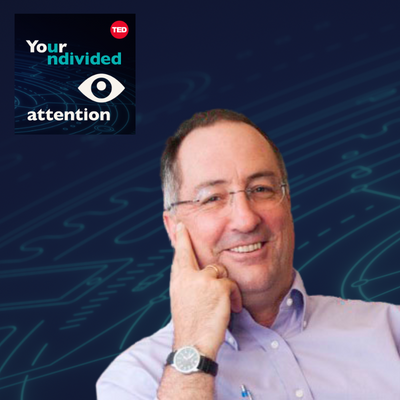Episode 40 | Sep 3, 2021
The Power of Solutions Journalism with Tina Rosenberg and Hélène Biandudi Hofer
What is the goal of our digital information environment? Is it simply to inform us, or also to empower us to act?
At the Solutions Journalism Network, the team understands that simply reporting on social problems rarely leads to change. What they’ve discovered is that rigorously reporting on responses to social problems — can more often give activists and concerned citizens the hope and information they need to take effective action. For this reason, SJN trains and encourage journalists to report on “solutions angles,” and more broadly seeks to rebalance the news, so that every day people are exposed to stories that help them understand problems and challenges, and stories that show potential ways to respond.
In this episode, Tina Rosenberg, co-founder of SJN, and Hélène Biandudi Hofer, former manager of SJN’s Complicating the Narratives initiative, walk us through the origin of solutions journalism, how to practice it, and what impact it has had. Tristan Harris and Aza Raskin reflect on how, much like solutions journalism, humane technology should also be designed to create an empowering relationship with reality — enabling us to shift us from learned helplessness to what we might call learned hopefulness.
Major Takeaways
A solutions story is defined by four qualities:
~It must be about an implemented response to a problem, rather than just a person or an idea.
~It must examine the evidence of success or failure — do we know how well this solution is working?
~It must be informational and not just inspirational, by providing information to people experiencing the same problem.
~It must also cover the solution’s limitations
The decline in trust in the U.S. correlates with the rise in investigative journalism. Since the 1970’s, polls have shown that general trust in other people has been declining. One contributing factor has been the rise of hard-hitting investigative journalism, which exposes wrongdoing and corruption. While investigative journalism that exposes wrongdoing is essential, SJN believes it must be balanced with reporting on the successes — to reflect society accurately and in a way that enables change.
Along with helping to solve social problems, solutions journalism can benefit publications and journalists. Tina Rosenberg cites research showing that negativity in the news is a key factor in driving away news audiences. The research shows solutions journalism can help publications by enhancing engagement, and help journalists by preventing burnout.
Solutions journalism can help us shift from learned helplessness to learned hopefulness. Learned helplessness is a feeling of powerlessness, which arises from a persistent inability to influence or improve our reality. On the other hand, what we might call learned hopefulness arises from experiences that give us an empowered relationship with reality. Doom-scrolling through traditional journalism can engender learned helplessness, whereas solutions journalism has the potential to fuel learned hopefulness.
The Solutions Journalism Network aims to be for journalism what the Center for Humane Technology aims to be for technology. Both are working to help people create an empowered relationship with reality.
Other recommended reading
Solutions Story Tracker
The Solutions Journalism Network’s database of more than 12,000 solutions stories from around the world.
Fixes column at the New York Times
Co-written by SJN co-founder Tina Rosenberg, the Fixes column covers solutions to social problems.
Ideas Lab column at the Milwaukee Journal Sentinel
An opinion column covering solutions, and a participant in the Solutions Journalism Network.
“Look at Brazil”
Tina Rosenberg’s 2001 story in the New York Times Magazine, which sparked the inspiration for the Solutions Journalism Network.



